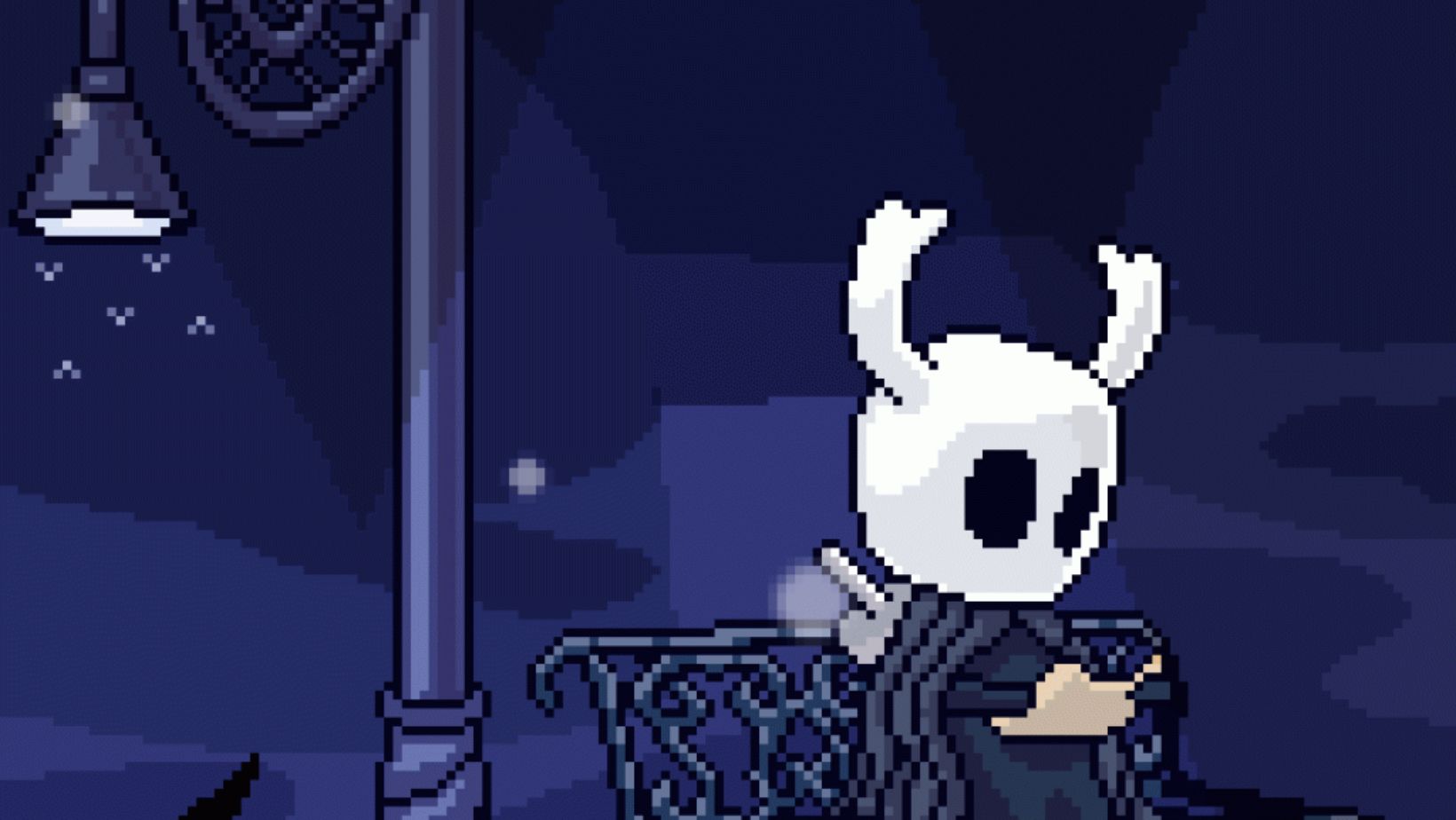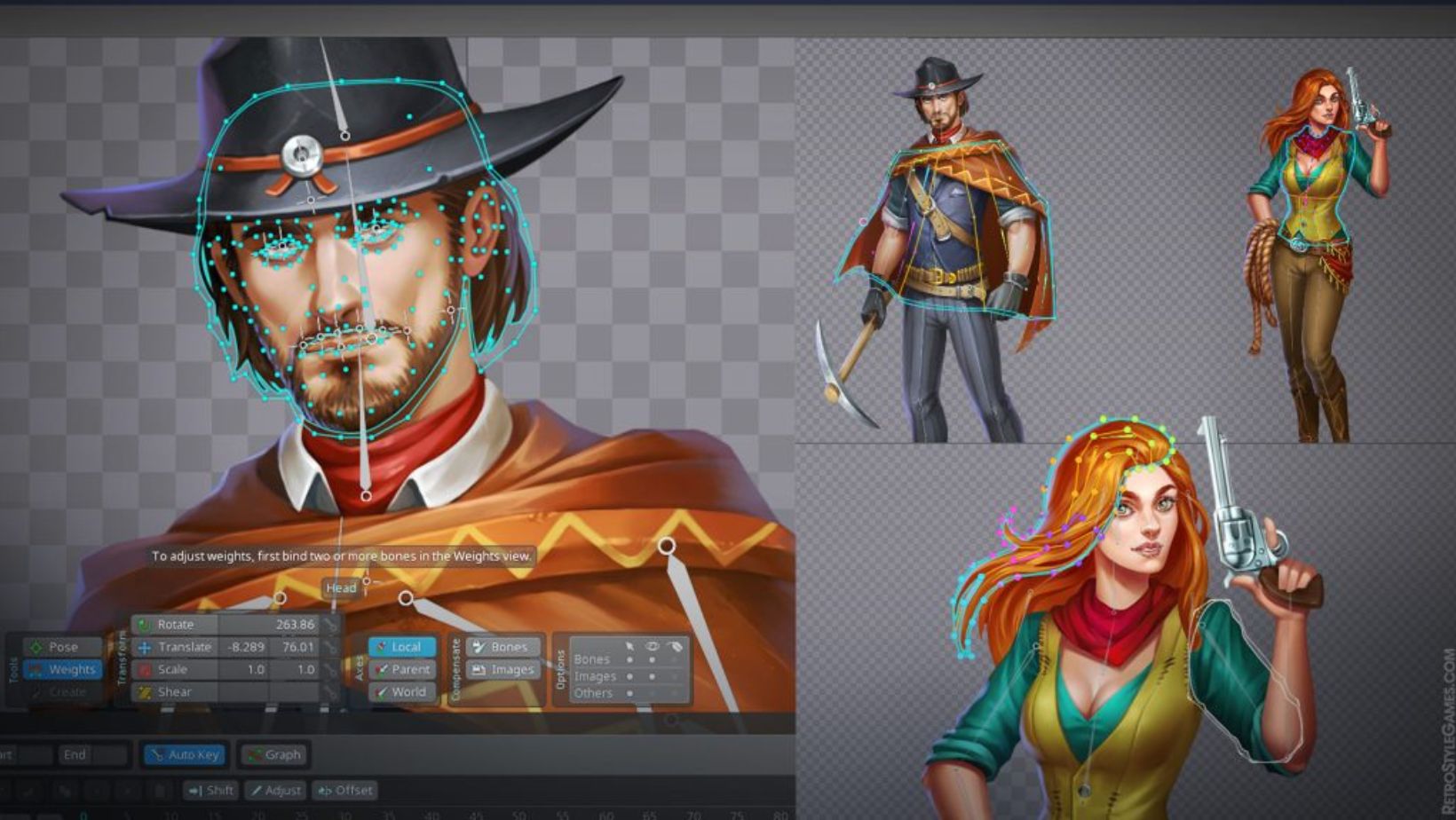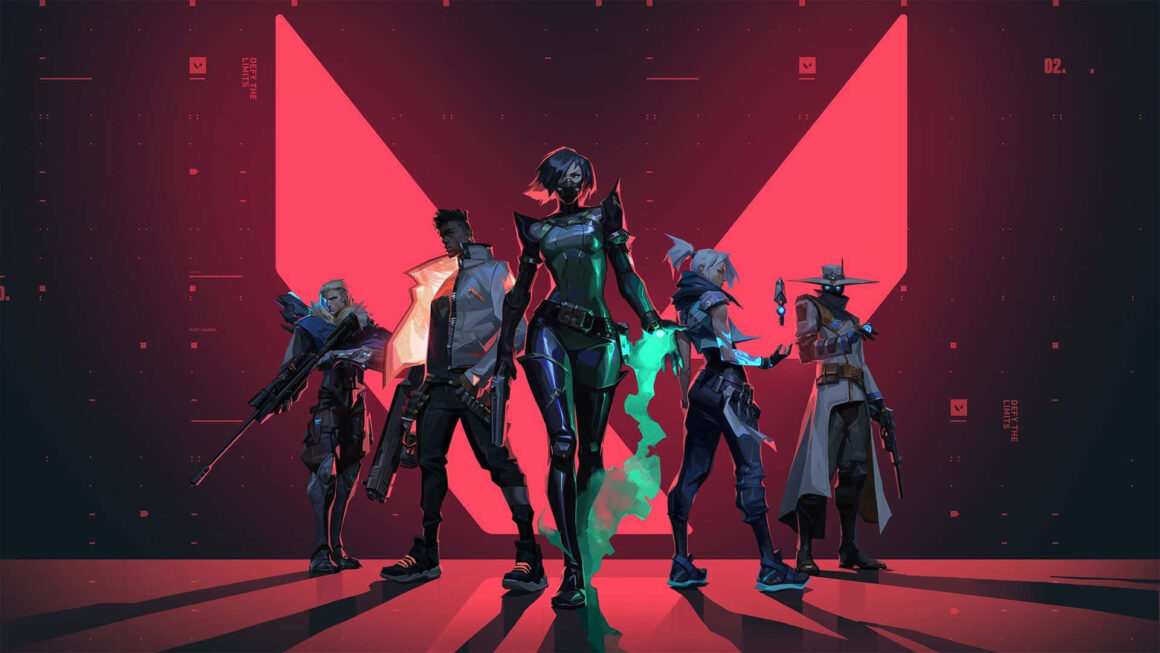2D animation has grown a lot in the last decades. In the 80s and 90s, games relied on low-resolution pixel art, with characters animated frame-by-frame using a few poses and simple loops.
Later, 2D was improving fidelity and artistry, and didn’t give up its position when 3D became accessible and popular. Games like Cuphead and Ori and the Blind Forest showed that hand-drawn animation could rival 3D in beauty, using traditional art scanned and integrated into modern engines.
Modern techniques are changing 2D art and animation constantly. Let’s talk about things that shape 2D Game Character Animation nowadays.
What 2D animation tools and software are used in 2025?
Some of the tools seem to be timeless, while others try to enter the market by leveraging the latest technologies. 2025’s animation pipeline blends industry staples with emerging AI-driven solutions. Here is the list of the most common tools.
- Spine – The go-to skeletal animation tool for smooth, rigged motion.
- Aseprite – A pixel art essential, updated in 2025 with new layer effects.
- Krita – Open-source frame-by-frame leader for detailed 2D character design.
- Adobe Animate – Long-standing vector animation platform for web and games.
- Blender Grease Pencil – Popular for hybrid 2D/3D workflows.
- Spiritus (new in 2025) – AI-powered rigging and animation from text prompts.
- MotionMaker (2025) – AI-assisted in-betweening, boosting production speed.
AI for 2D character animation today
In 2025, artificial intelligence has become an integral part of 2D character design and animation workflows, not as a replacement for artists, but as a powerful co-creator. AI tools now handle repetitive and time-consuming tasks such as automatic in-betweening, cleanup, and even procedural rigging, allowing animators to focus more on creative direction and visual storytelling.
Modern AI-assisted software can interpret rough keyframes and generate smooth motion sequences, adjust character proportions for different game resolutions, and adapt animations to various gameplay contexts without manual rework. For example, AI can instantly retarget a run cycle to different skeletons or adjust facial expressions in real time based on player input.
Another breakthrough in 2025 is AI’s ability to integrate seamlessly with traditional tools like Spine, Aseprite, or Blender’s Grease Pencil, letting animators keep their preferred workflows while benefiting from machine learning technologies.
What challenges do artists face when animating 2D characters in 2025?
Even with advanced tools and AI assistance, creating high-quality animations remains a demanding process for any 2D art company or team. One of the biggest challenges is balancing efficiency with artistic integrity — while automation speeds up tasks like rigging or in-betweening, it can sometimes produce generic results that require manual polishing to keep the unique, handcrafted feel players expect.
Another difficulty lies in maintaining consistency across large animation libraries, especially in projects handled through 2D game art outsourcing. When multiple artists from different studios contribute to the same game, differences in style, frame pacing, and line quality can become apparent, requiring additional review and adjustments.
Finally, adapting animations to dynamic gameplay elements—procedural movement, physics interactions, and branching narrative sequences — demands both creative problem-solving and close collaboration between artists and developers. For many 2D game development companies, this balance between artistry, technical precision, and production speed is the central challenge of 2025.
Wrapping up: Continuous Evolution of 2D Art Services Goes on
Looking at the trends in 2025, it’s clear that 2D game development services continue to adapt and thrive alongside the changing tools, techniques, and demands of the gaming industry.
Animation work process includes using traditional artistry and AI-assisted workflows, making it faster to create expressive, polished characters without losing the human touch. The range of available software — from long-standing staples like Adobe Animate to newer, specialized tools — gives artists more flexibility than ever.
At the same time, challenges haven’t disappeared — whether it’s managing tight production schedules, handling complex multi-platform optimization, or ensuring stylistic consistency across large teams. This is where experienced teams make all the difference, combining artistic vision with technical expertise to bring game worlds to life in a way that feels fresh, functional, and ready for today’s players.


![[D2] Daily Reset Thread [2021-09-07]](https://meltingtopgames.com/wp-content/uploads/2023/07/Untitled-design-2024-07-10T102422.093-1160x651.png)